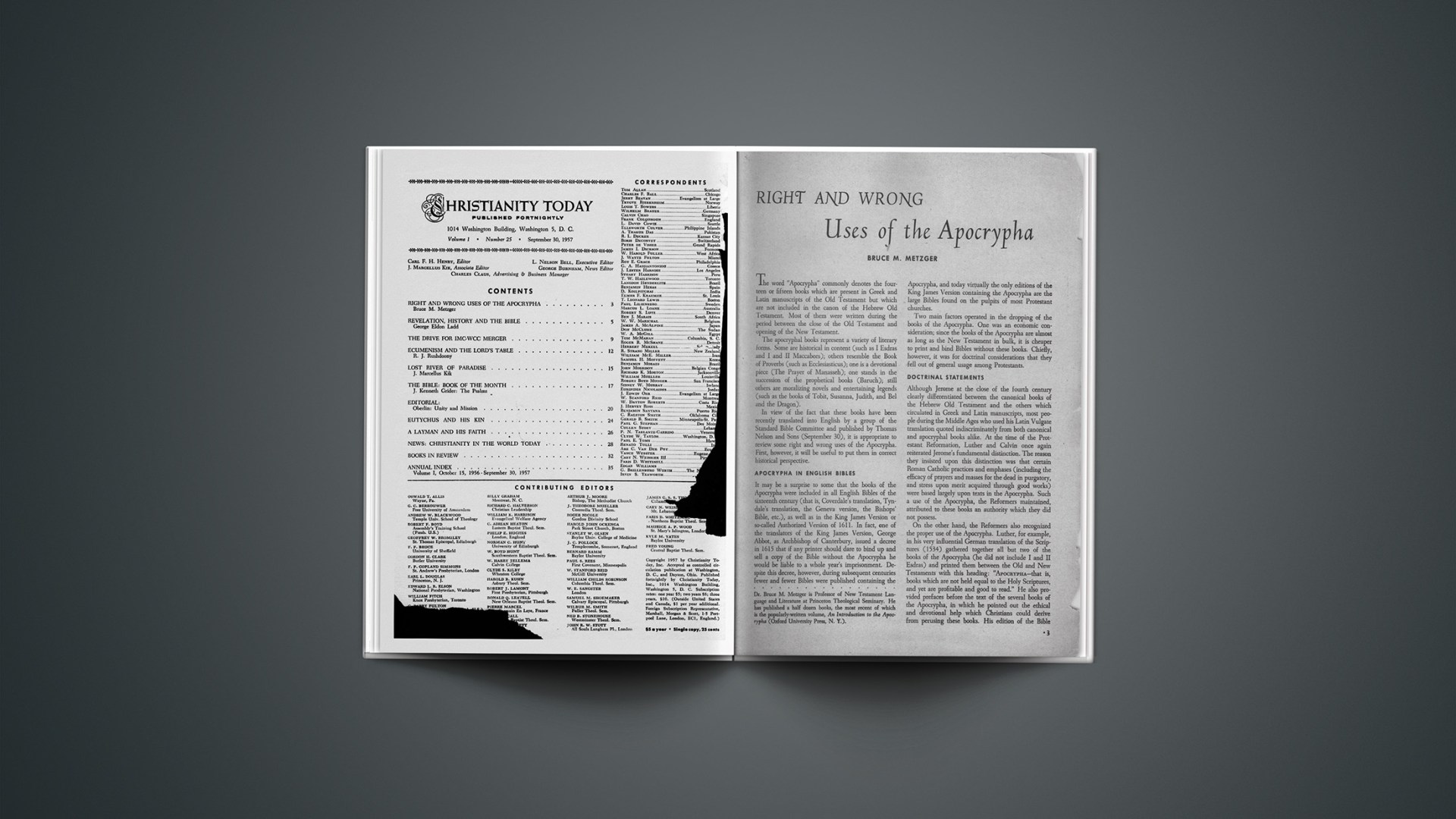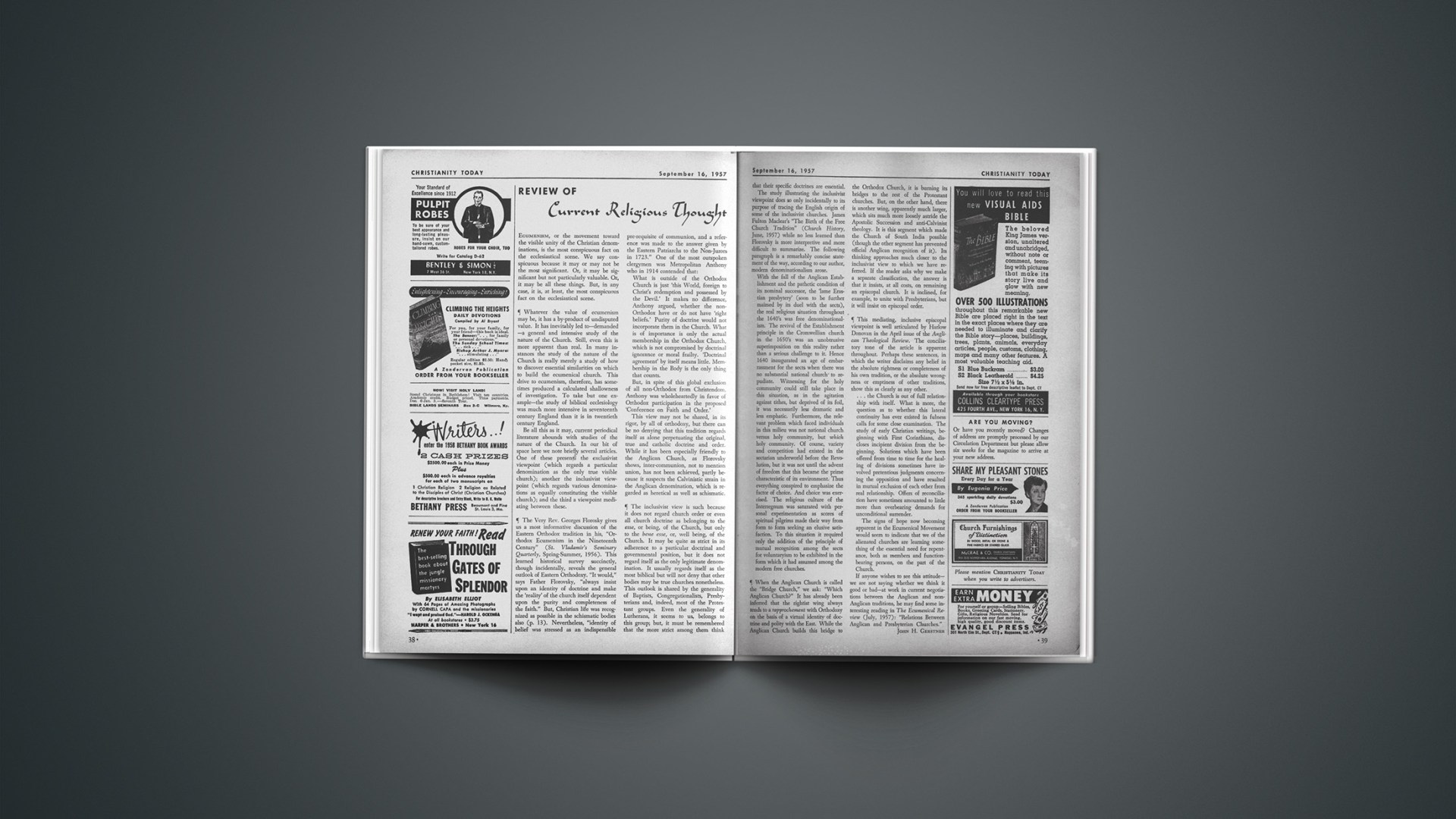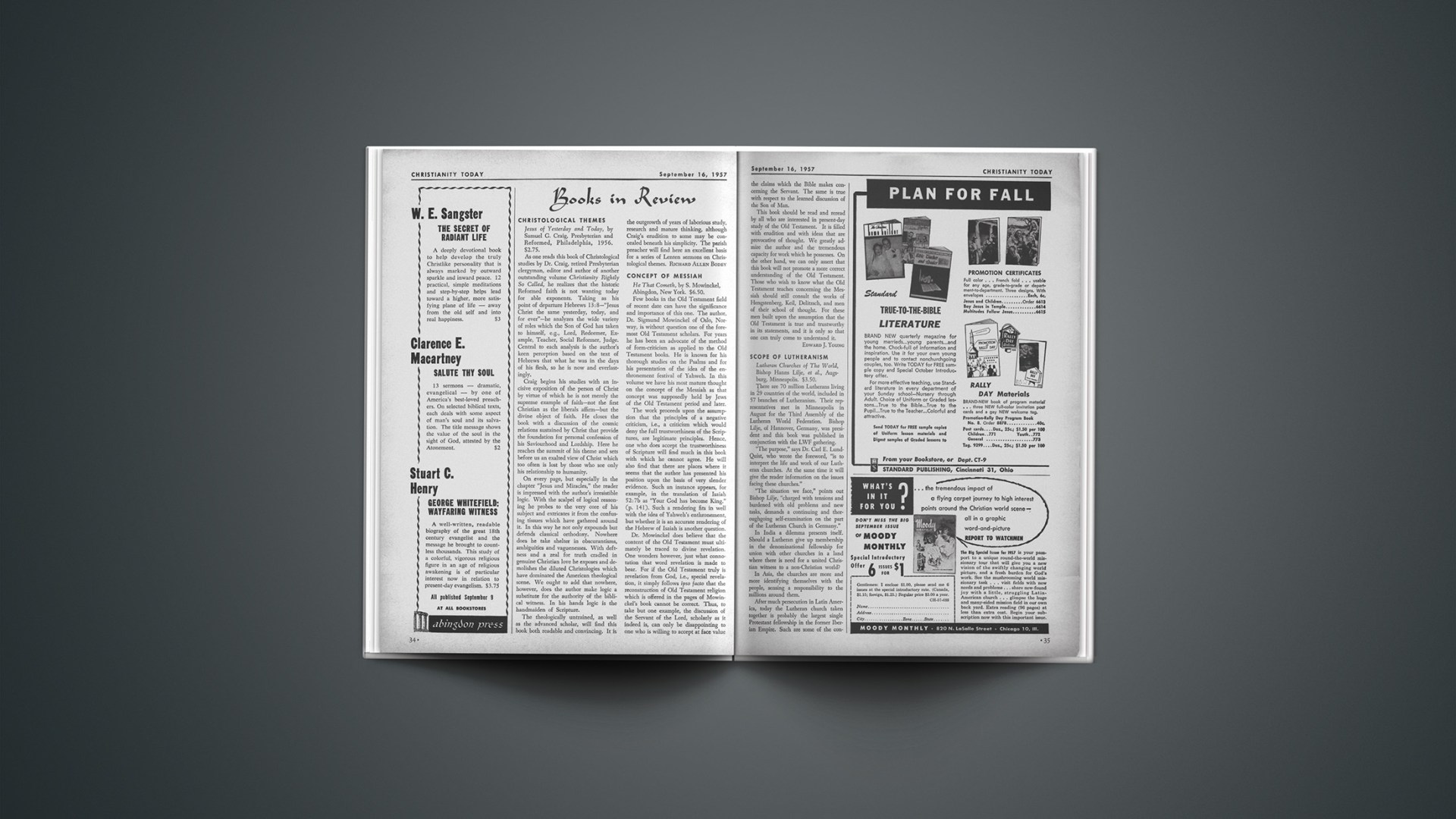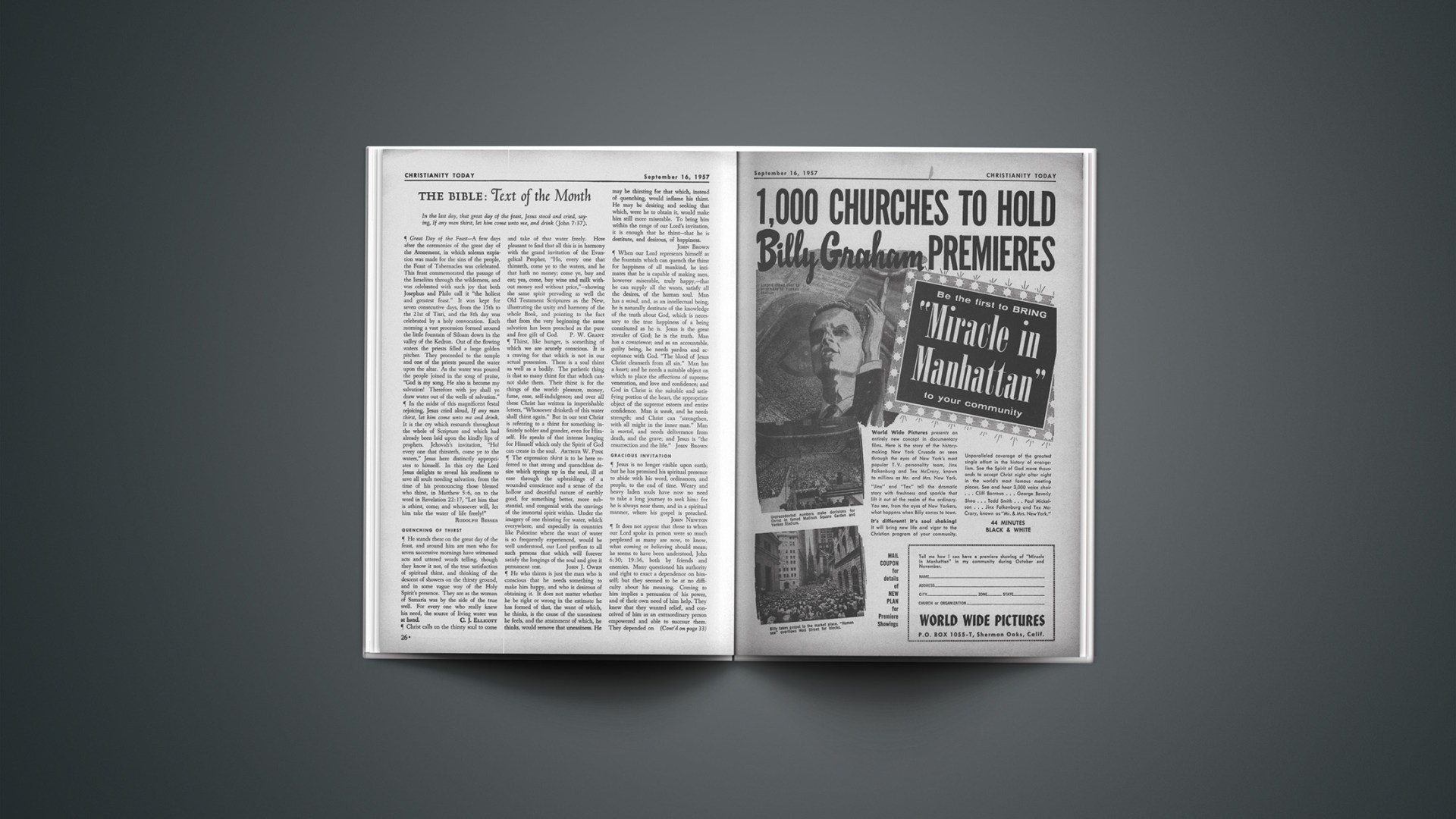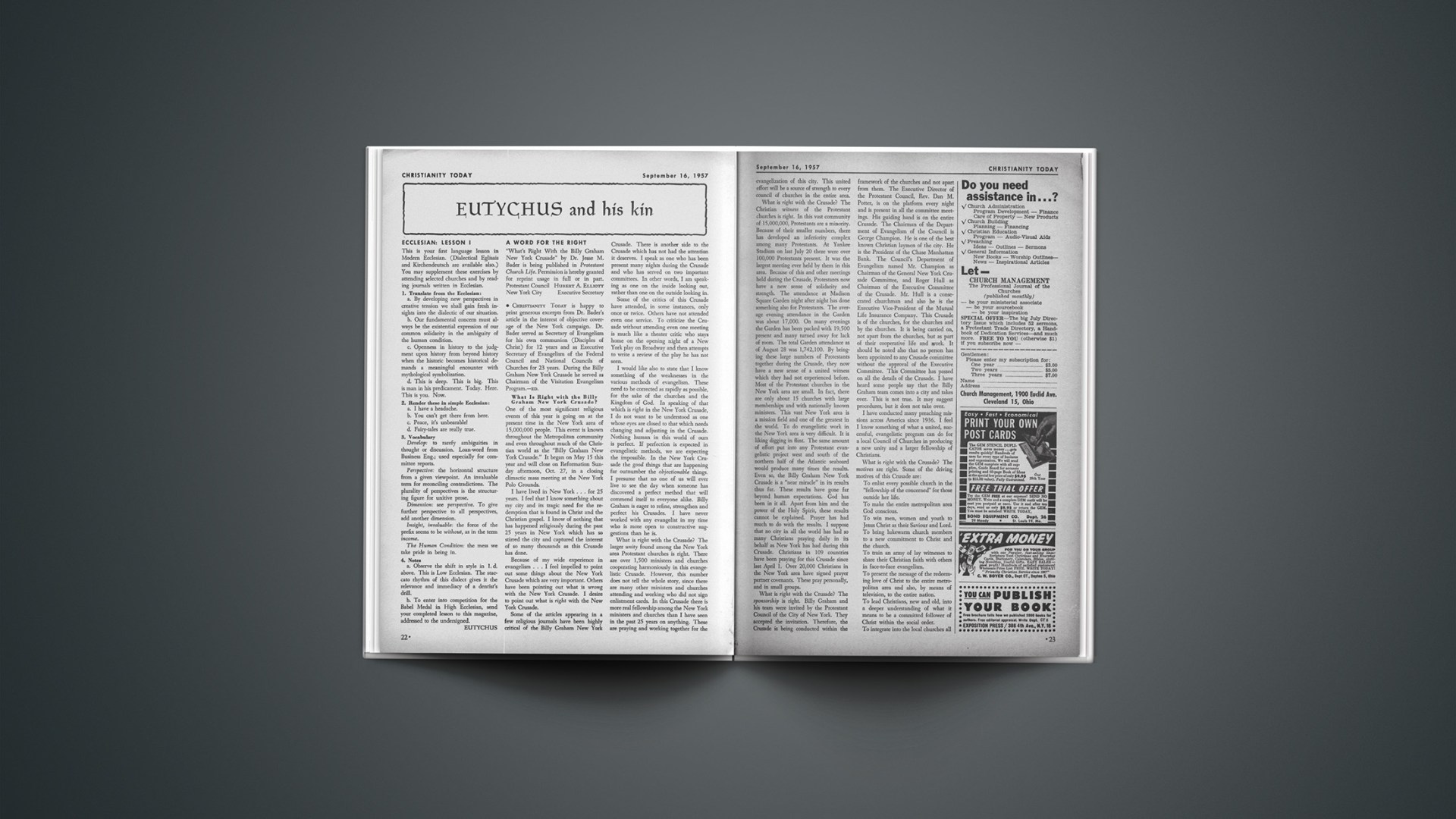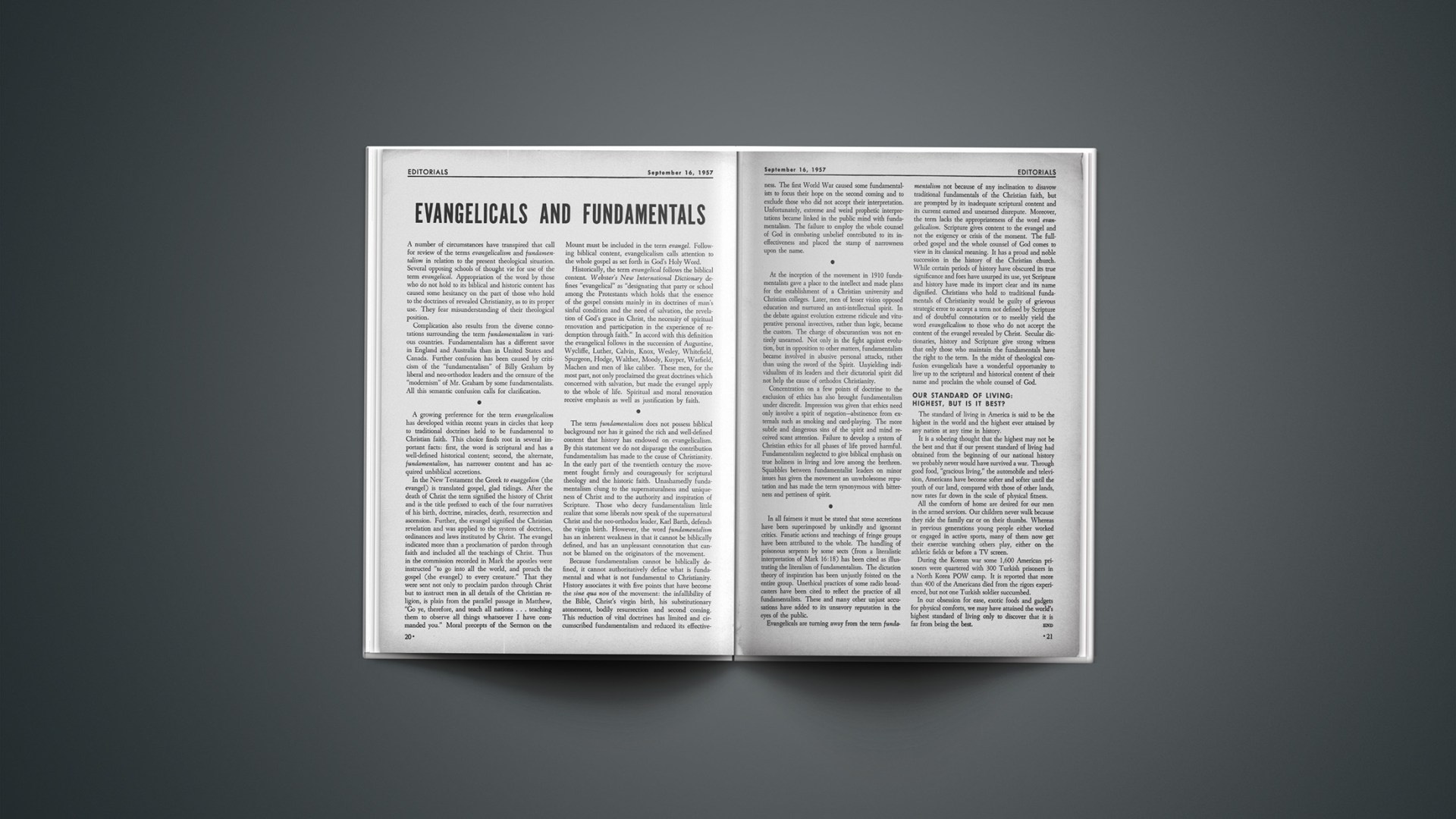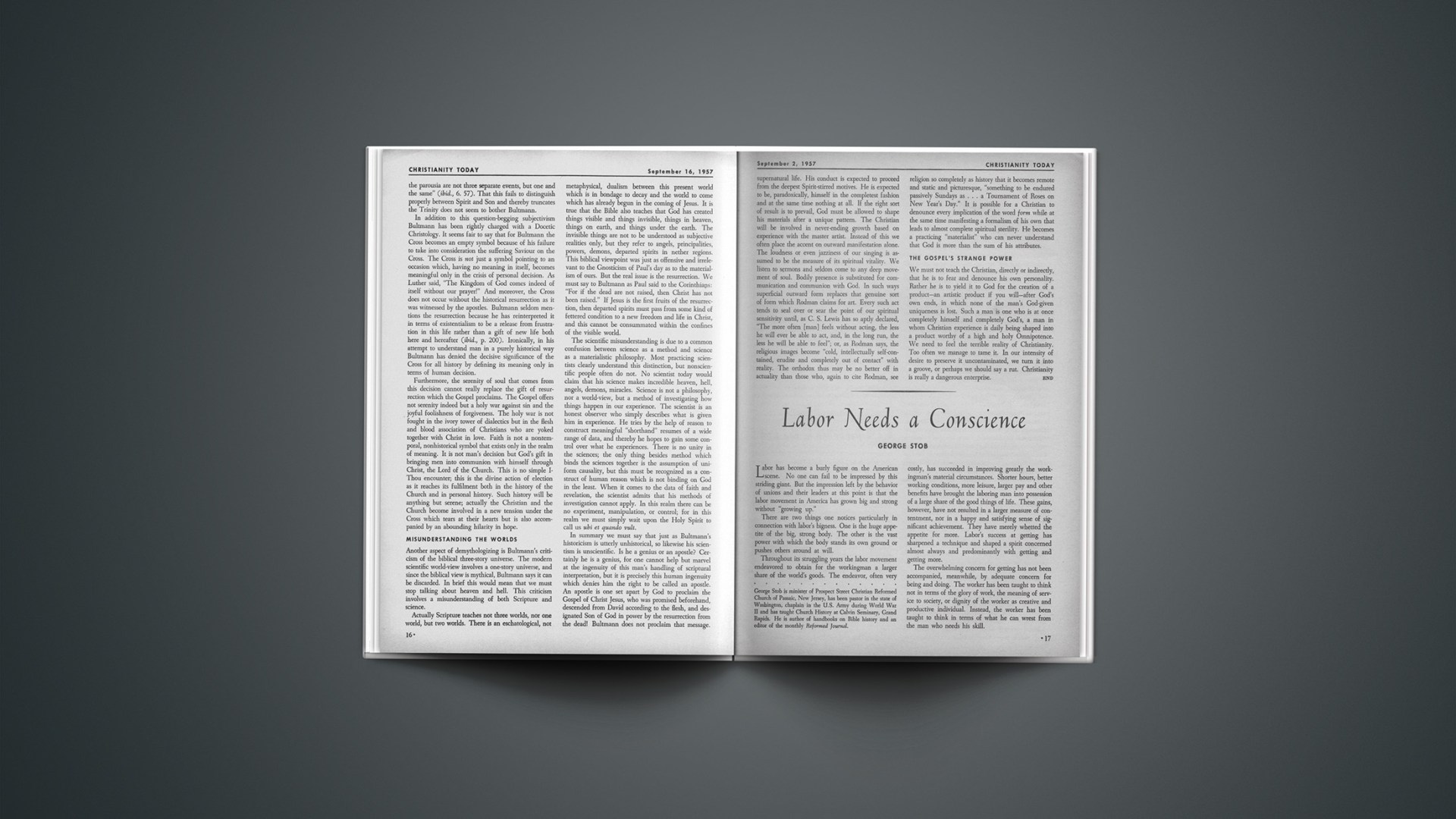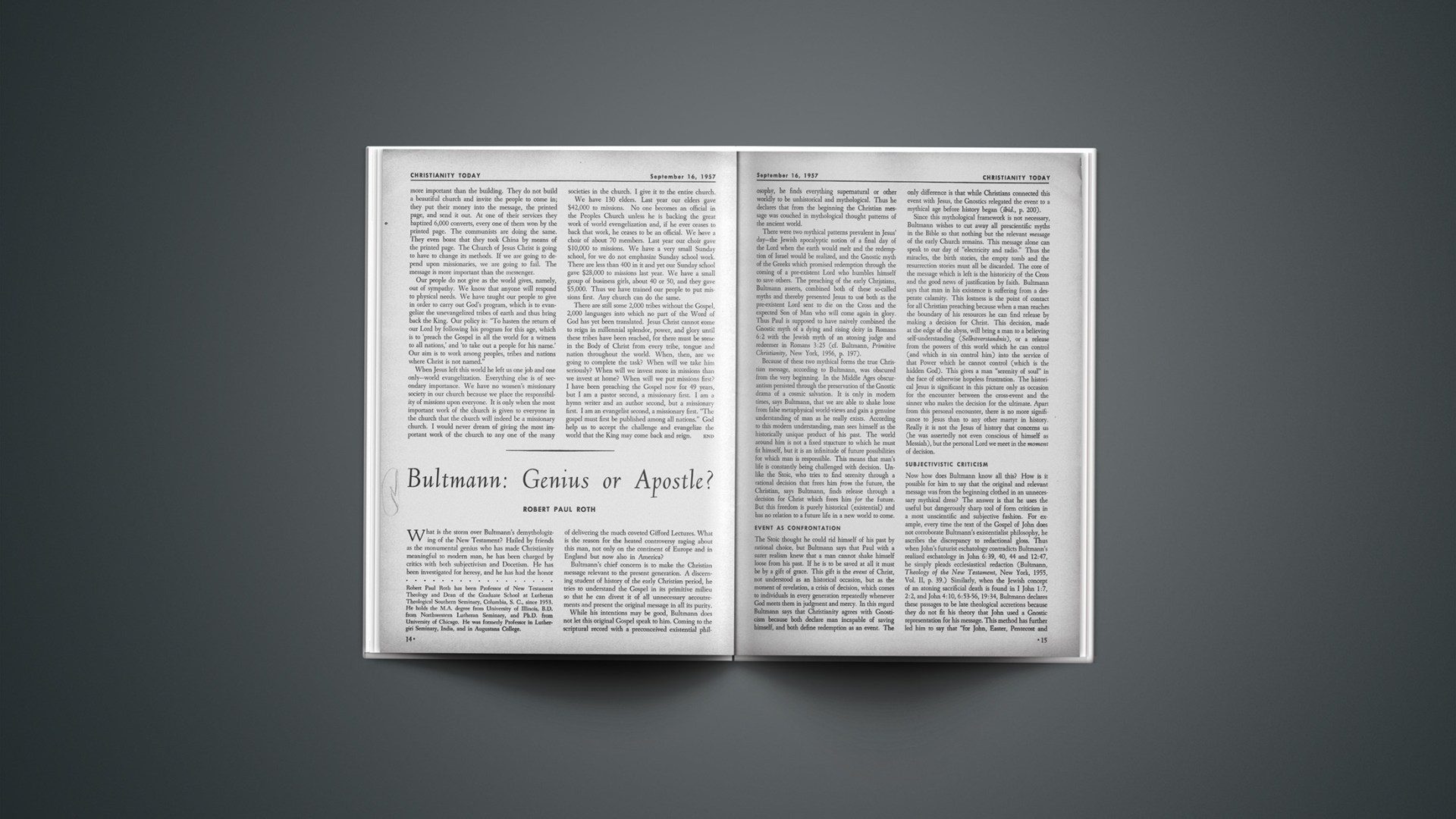At the heart of biblical religion is revelation. The presupposition of biblical religion is that man’s predicament is so involved that he is incapable of finding God. Left to himself, man’s religious quest leads to futility. However, God has not left man to himself. God has taken the initiative to bring to men that which they could not achieve: knowledge of God and fellowship which grows out of that knowledge. This divine activity involves both redemption and revelation. God has acted to impart to men, who are in bondage to ignorance and sin, knowledge of and fellowship with himself.
Role Of The Bible
The role of the Bible in revelation is vigorously debated in contemporary theological discussion. Orthodox theology has maintained that revelation has taken place in the Bible, that the Scriptures themselves are divine revelation, that the Bible is the Word of God. A powerful reaction to this traditional theology has arisen with the insistence that the medium of revelation is redemptive history rather than a book. The content of revelation is held to be not truth about God to be stated in propositional form; it is God himself who through revelation imparts himself to man. Revelation conveys not knowledge about God but knowledge of God.
A vigorous and stimulating presentation of this modern point of view may be found in John Baillie’s American Bampton lectures delivered at Columbia University (The Idea of Revelation in Recent Thought, New York, Columbia Univ. Press, 1956). Baillie has some excellent passages on the historical character of biblical religion. Other sacred books consist of oracles setting forth timeless truths to instruct man in his conduct and worship. The Bible records what God has done to bring man into fellowship with himself. The Mosaic law is set apart from other legal codes in being based upon a covenant between Israel and God which is conceived as taking place in history. The prophetic oracles differ from other oracles in antiquity in that they were concerned with the meaning of definite historical situations rather than with timeless truth. While the great philosophies offer a new interpretation of old and universal facts and pagan religions attempt to provide men with a new relationship to an old situation, biblical religion has something new to announce. God has done something. New events have occurred which place men in a situation in which they have never been before (pp. 52 f). The Gospel is indeed “good news.”
Through this historical revelation culminating in Christ, says Baillie, God has not merely made himself known; he has given himself that men might enter into fellowship with God. If revelation consisted chiefly of theological propositions, the reaction required of men would be intellectual assent. This, however, is not what God requires; it is rather complete committal, truth, that there might ensue a life of fellowship with and dependence upon God.
There is indeed, Baillie admits, an element of assent in revelation; but this intellectual element plays a distinctly subordinate role in man’s response to God’s act. Only wholehearted trust which replies to God’s giving of himself in revelation is an adequate response. In fact, such a response is necessary for revelation actually to exist. Revelation is never complete, i.e., the process of the divine impartation is never consummated without this human response.
Revelation Or Witness?
In this process, Baillie insists, the Bible is not revelation but a witness to revelation. It is both a record of what God has done in revelation and the response of men contemporary with the divine act which completes the revelation. As men in subsequent ages read the witness and, led by the Spirit, respond to God’s revelatory act in Christ, as did the prophets and the apostles so that the prophetic response becomes our response, then revelation again becomes a completed reality.
This theology of revelation as recital and response rather than as proposition is offered as a challenge to the traditional view that the Bible is part of revelation. The traditional view which is no longer acceptable to thinkers like Baillie is described as “an ecclesiastical formulation which identified revelation with the written word of Scripture and gave to the action of God in history the revelational status only of being among the things concerning which Scripture informed us” (p. 62). In other words, orthodoxy is accused of emphasizing the role of the Bible in revelation to the practical exclusion of revelation in historical events.
This “ecclesiastical formulation” is not the only interpretation held by modern orthodox theologians. There is no reason why the orthodox understanding of revelation requires a denial of special or revelatory history. On the other hand, cordial recognition of history as the vehicle of revelation does not lead to a denial that the Bible is itself a part of revelation. The role of redemptive history in revelation is recognized, if not stressed, by Carl F. H. Henry in his essay, “Divine Revelation and the Bible” (In Inspiration and Interpretation, John W. Walvoord, ed., Grand Rapids, Eerdmans, 1957, pp. 253–278). “Special revelation involves unique historical events of divine deliverance.… The category of revelation is therefore broader than the category of the spoken and written words of Scripture, since it covers special historic events which the Bible normatively interprets.… Revelation cannot, therefore, be equated simply with the Hebrew Christian Scriptures; the Bible is a special segment with a larger divine activity of revelation” (ibid., pp. 254 f).
Certainly Henry’s view squares with the teachings of Scripture. The Bible is very conscious that God has spoken unto the fathers in the prophets in diverse manners (Heb. 1:1). One of these modes of conveying the Word of God is historical events. We need not be afraid of the affirmation that God has revealed himself in redemption history. In fact, apart from this redemptive history, there would be no revelation and no Bible.
We may agree with Baillie that the historical character of biblical religion is one of the elements which determines both its distinctiveness and its glory. Theology is not simply a set of universal truths, a system of philosophical concepts. The so-called “old liberalism” of men like Adolf von Harnack is subject to the criticism that it reduced the kernel of Christianity to a few religious truths of universal character: the fatherhood of God, the brotherhood of man, the infinite value of the human soul and the ethic of love. This is not biblical Christianity. The Bible asserts that God has done something, that God has been active in the stream of redemptive history and has finally himself entered history in the person of his Son, Jesus Christ, to bring lost men into fellowship with himself. God is indeed revealed in the historical Jesus. “He that hath seen me hath seen the Father” (John 14:9).
History And Relativity
There is indeed one important circle of contemporary theological thought which is embarrassed by the historical character of revelation, for it seems to make theology dependent upon the relativities of historical research. The modern understanding of history often takes offense at the idea that one “piece” or strand of history can contain meanings which are absolute and by which all other history is judged. The effort has therefore been made to free Christian theology from its involvement in history while retaining the theological values of orthodoxy—an effort which has not been successfully accomplished (See Paul King Jewett, Emil Brunner’s Concept of Revelation, London, James Clarke, 1954).
While we may agree that the events of redemptive history are revelatory, that God has spoken in the events of the history of Israel and above all in Jesus Christ, we must insist that much contemporary theological thought has not adequately understood the role of the Bible in revelation. Revelation in acts is not left to speak for itself. Revelation in historical events might not always be recognized as such. Baillie recognizes this fact and, following C. H. Dodd, admits that history consists of the historical occurrence plus its interpretation or meaning. It is the total structure of historical events plus their interpretation which is God’s Word to man. The events by themselves are capable of other explanations, but the prophetic interpretation recognizes the divine activity in the historical event, and this prophetic interpretation becomes itself a new event (p. 69).
Normative Interpretation
This is indeed the biblical pattern. However, a problem arises at this point: does the biblical concept of revelation recognize any normative and authoritative element in the prophetic interpretation of the revelatory historical events? Neo-orthodox theologians see little that is authoritative in the interpretation. They hold that the prophetic interpretation is a human response which completes the divine act in history so that it becomes revelation to the person responding. This view insists that the Bible is a witness to the act-revelation and the record of the human response which completes it. The man who today reads the witness to revelation and responds as did the prophets and apostles enters into the same experience of revelation. God becomes reality to him as he did to them.
This, however, is not the biblical pattern. Rather, the interpretation is not merely a human reaction to the divine act but is also a divine act. The prophetic interpretation is itself the Word of God which is necessary to convey the divine meaning of the historical events. Redemptive history has a character of once-for-allness. Christ died. The death of Christ is an unrepeatable event. Christ died for our sins. This apostolic interpretation of the death of Christ also shares this character of once-for-allness. There is indeed variety of interpretation, but it is not a variety of contradiction but of richness of meaning. There are divinely intended meanings in the events of redemptive history which are not always self-evident. These meanings are conveyed in the prophetic and the apostolic interpretation. Therefore the total revelatory event includes the historical act plus the prophetic interpretation; and both share the character of once-for-allness. There must indeed be a human response to revelation as each individual embraces the redemptive act of God for his own experience. This, however, is not revelation but illumination. My experience does not share the authoritative character of the apostolic interpretation, nor does it give rise to new and equally authoritation meanings.
The Meaning Of Calvary
We may here cite only one illustration to demonstrate this fundamental principle that the revelatory event consists of occurrence plus authoritative meaning. The death of Christ is an historical event. Paul says that it is the proof, the demonstration of the love of God (Rom. 5:8). How do we know that Christ’s love discloses the love of God? Were the Roman soldiers conscious of God’s love as they watched Jesus die? Were the few disciples who stayed close to the cross drawn there because they realized that in this act God was demonstrating his love for them? Was the love of God in Christ’s death self-evident? Does Golgotha speak for itself? On the contrary, the disciples thought that the end of their world had come. Their reaction was, “We had hoped.…” (Lk. 24:21 RSV).
An answer frequently given to this problem is that the theological understanding of Christ’s death grew out of Christian experience. However, the fact seems to be that Christian experience arose only where there was already a theological interpretation of the meaning of Christ’s death. Only when the Resurrection reversed the apparent catastrophe of his death, only when the risen Christ himself interpreted the meaning of his death (Lk. 24:26–27), only when the apostles set forth the unseen, divine activity in an otherwise tragic event, did it begin to convey a new significance and to be recognized for what it was: an act of God’s love. We know that Jesus’ death shows the love of God only because of the prophetic interpretation of that event. This interpretation is a given, and it is normative, authoritative. It cannot be displaced by any alternative interpretation, for it is itself revelation which comes from God. The authoritative apostolic interpretation has been crystallized and deposited in the written New Testament Scriptures, which are therefore themselves revelation, the Word of God.
This analysis indicates the role of the Bible in revelation. The prophetic words of interpretation were sometimes spoken, sometimes written. Sometimes they preceded act-revelation, sometimes they followed, and sometimes they both preceded and followed. But interpretative words are always necessary. Revelation is never left to speak for itself.
Thus God’s revelatory acts were consummated in Jesus Christ. He is an historical character, and Christianity stands or falls with the historicity of his person and ministry. But revelation is not itself consummated in Jesus Christ, for the event of Christ is not “bare” event; the meaning of the “Christ event” is set forth in the apostolic interpretation, i.e., in our New Testament. This interpretation is itself revelation, consisting of the divinely initiated tradition of the meaning of what God did and said in Christ. The events of redemptive history can never be repeated, nor can the prophetic interpretation ever be repeated. Both are normative; both participate in the character of once-for-allness. The experience of the apostles and prophets included two elements: a personal realization of God, and a normative interpretation of the divine revelatory events. The first is repeatable in Christian experience; the second is unique.
Revelation And Inspiration
Thus revelation is never consummated apart from the inspired interpretation of the apostles and prophets. In biblical days the interpretation was of necessity, in part at least, in spoken form. This inspired interpretation is now inscripturated in the Word of God written. The writing of the inspired Scriptures is therefore an essential part of the activity of God in redemptive history. Revelation has not occurred in history alone; it has occurred also in the written Scriptures which preserve the divinely initiated meaning of act-revelation. This does not mean that there are two revelations or two processes of revelation—one in history and one in Scripture. Both elements are essential in the one process of revelation. God acted in history; God inspired the prophets to interpret authoritatively the meaning of revelatory history, whether the interpretation was oral or written. We no longer have the living prophetic voice; but we have the living Word of God written, which is the inscripturated prophetic interpretation. Redemptive history is revelatory, but it is not by itself revelation; it is revelation only as the prophetic, or biblical, interpretation discloses the revelatory meaning of redemptive history. We can however say that redemptive history is revelation when we recognize that the Bible is itself the result of God’s activity in history and is in fact the crown and consummation of the process of revelation, giving to act-revelation its normative meaning. Thus revelation consists of acts and words, occurrences and interpretation, history and the Bible. The Bible is not merely a witness to revelation in history; it is itself revelation which alone discloses the revelatory meaning of redemptive history.
This explains why propositional truth is an indispensable element in revelation. “God is love.” This is a proposition; but it is much more than a proposition. It is a proposition which, ultimately, can be made and understood only in the light of the historical event of Christ’s death, as that event is prophetically interpreted in the Scriptures. Such truth requires the assent of the reader; yet it is obvious that intellectual assent is not enough. Scripture itself affirms this. Personal response is demanded—commitment, trust. It is true that in revelation and as a result of revelation, God gives himself. Revelation has a redemptive purpose. However, this divine self-giving includes knowledge about God as well as knowledge of God. I must know something about God before I can commit myself to him. The continuing human response to the divine revelation includes both mind and heart; in fact, the whole man. It is the business of orthodox Christianity to define and to defend the truth about God and redemption. Apart from assured truth, we have no certain message to proclaim. But it is also the business of orthodox Christianity to propagate revealed truth, to proclaim to sinful men the reality of the self-revealed God and the divinely initiated redemption in Christ, that lost men may be brought back into fellowship with the living God. This is the goal of revelation.
The name of Oswald J. Smith, Litt.D., pastor of the Peoples Church in Toronto, Canada, is a symbol of missionary spirit in the pulpit. His church has contributed more than 3 million dollars for missionary work, mostly for foreign missions. He has written 22 small books, one of them, The Passion for Souls, somewhat of a missionary classic. Dr. Smith here relates the mission and method that motivated his program.
Preacher In The Red
SPEECHLESS
It was in the early days of my ministry, when I was a student minister prior to college days. I was making a pastoral call at a home where a little girl talked incessantly, preventing a conversation between her mother and myself. In self-defense, I playfully said to the child, “Amy, if you will be quiet for five minutes and don’t say a word, I will give you five cents. That’s a cent a minute, which is pretty good pay.”
The little girl became silent and remained so, while I kept my eye on my watch. At the end of the five minutes I gave her the five cents, for which she thanked me. Imagine my great surprise when she looked me seriously in the face and said, “Now, Mr. C., if you will be quiet and won’t speak for five minutes I’ll give it back to you!” It left both her mother and myself speechless for the moment and I can’t recall who spoke next, or what was said.—The Rev. TOM CURRANT, St. Thomas—Wesley United Church, Saskatoon, Saskatchewan, Canada.
For each report by a minister of the Gospel of an embarrassing moment in his life, CHRISTIANITY TODAY will pay $5 (upon publication). To be acceptable, anecdotes must narrate factually a personal experience, and must be previously unpublished. Contributions should not exceed 250 words, should be typed double-spaced, and bear the writer’s name and address. Upon acceptance, such contributions become the property of CHRISTIANITY TODAY. Address letters to: Preacher in the Red, CHRISTIANITY TODAY, Suite 1014 Washington Building, Washington, D. C.



